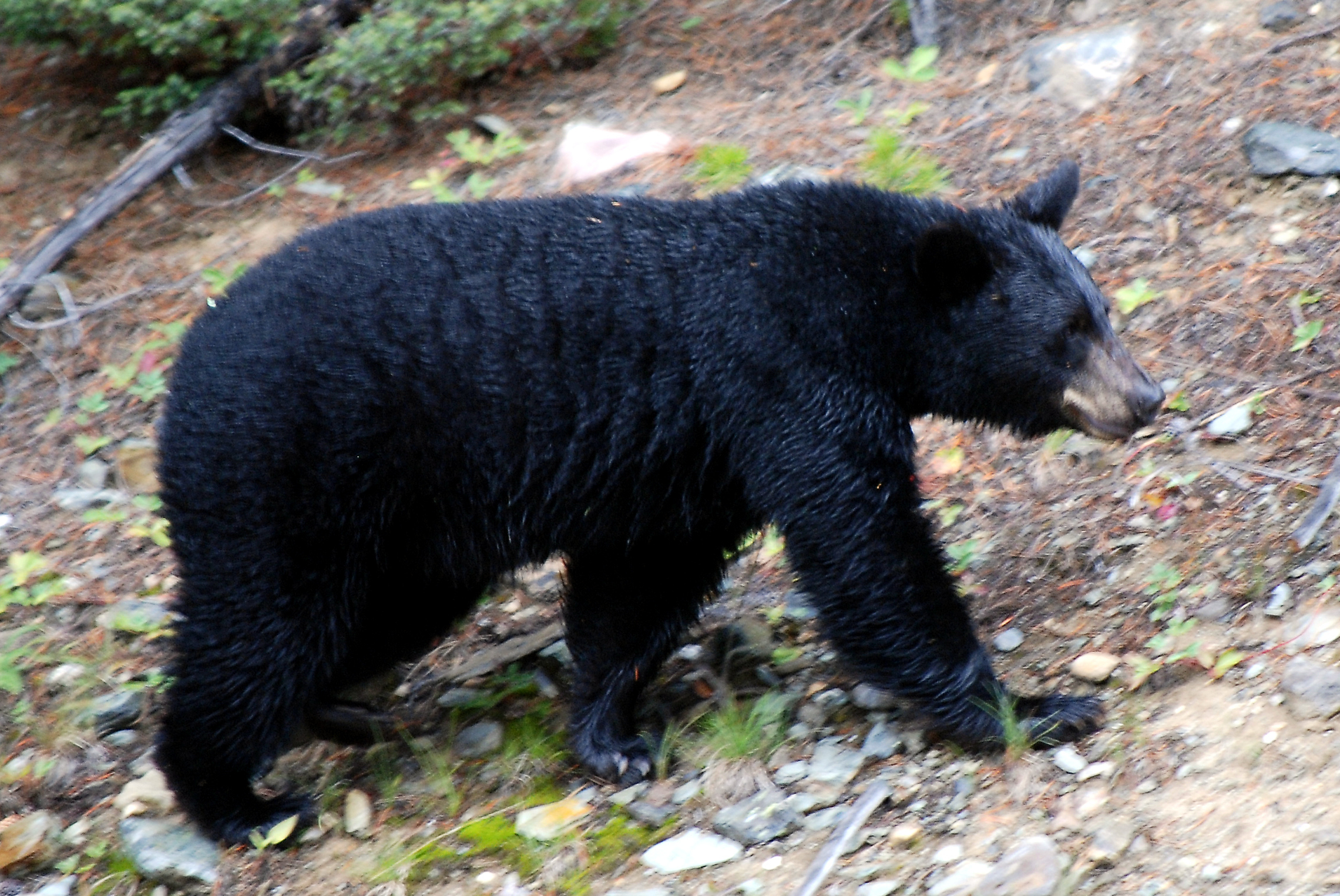Post by Infinity Blade on May 27, 2014 2:24:19 GMT 5
American Black Bear-Ursus americanus
The American black bear (Ursus americanus) is a medium-sized bear native to North America. It is the continent's smallest and most widely distributed bear species. Black bears are omnivores with their diets varying greatly depending on season and location. They typically live in largely forested areas, but do leave forests in search of food. Sometimes they become attracted to human communities because of the immediate availability of food. The American black bear is the world's most common bear species. It is listed by the IUCN as Least Concern, due to the species' widespread distribution and a large global population estimated to be twice that of all other bear species combined. Along with the brown bear, it is one of only two of the eight modern bear species not considered globally threatened with extinction by the IUCN. American black bears often mark trees using their teeth and claws as a form of communication with other bears, a behavior common to many species of bears.

Pristichampsus rollinatii
Pristichampsus ("saw crocodile") is an extinct genus of pristichampsid crocodylian that grew to approximately three metres (10 ft) in length. Pristichampsus had heavily armoured skin, and long limbs suggesting a cursorial (i.e. running) habitus. It also had hoof-like toes, suggesting that it lived more on land than in the water, and that it therefore probably hunted terrestrial mammals. Pristichampsus's teeth were ziphodont; i.e., laterally compressed, sharp, and with serrated edges (characteristic of terrestrial crocodilians that are unable to dispatch their prey by drowning them). Due to their similarity to those of certain theropod dinosaurs they were initially mistaken for theropod teeth, leading paleontologists to believe that some non-avian dinosaurs survived the Cretaceous–Paleogene extinction event. The species P. rollinatii shows further features adapting the animal to this lifestyle. The tail was more reminiscent of a dinosaur's, being round in cross-section and lacking the osteoderm crest observed in extant crocodile species. It would also have been capable of galloping and facultative bipedalism. However, this would only have been possible at high speeds as the centre of gravity moves in front of the pelvis.

The American black bear (Ursus americanus) is a medium-sized bear native to North America. It is the continent's smallest and most widely distributed bear species. Black bears are omnivores with their diets varying greatly depending on season and location. They typically live in largely forested areas, but do leave forests in search of food. Sometimes they become attracted to human communities because of the immediate availability of food. The American black bear is the world's most common bear species. It is listed by the IUCN as Least Concern, due to the species' widespread distribution and a large global population estimated to be twice that of all other bear species combined. Along with the brown bear, it is one of only two of the eight modern bear species not considered globally threatened with extinction by the IUCN. American black bears often mark trees using their teeth and claws as a form of communication with other bears, a behavior common to many species of bears.

Pristichampsus rollinatii
Pristichampsus ("saw crocodile") is an extinct genus of pristichampsid crocodylian that grew to approximately three metres (10 ft) in length. Pristichampsus had heavily armoured skin, and long limbs suggesting a cursorial (i.e. running) habitus. It also had hoof-like toes, suggesting that it lived more on land than in the water, and that it therefore probably hunted terrestrial mammals. Pristichampsus's teeth were ziphodont; i.e., laterally compressed, sharp, and with serrated edges (characteristic of terrestrial crocodilians that are unable to dispatch their prey by drowning them). Due to their similarity to those of certain theropod dinosaurs they were initially mistaken for theropod teeth, leading paleontologists to believe that some non-avian dinosaurs survived the Cretaceous–Paleogene extinction event. The species P. rollinatii shows further features adapting the animal to this lifestyle. The tail was more reminiscent of a dinosaur's, being round in cross-section and lacking the osteoderm crest observed in extant crocodile species. It would also have been capable of galloping and facultative bipedalism. However, this would only have been possible at high speeds as the centre of gravity moves in front of the pelvis.










